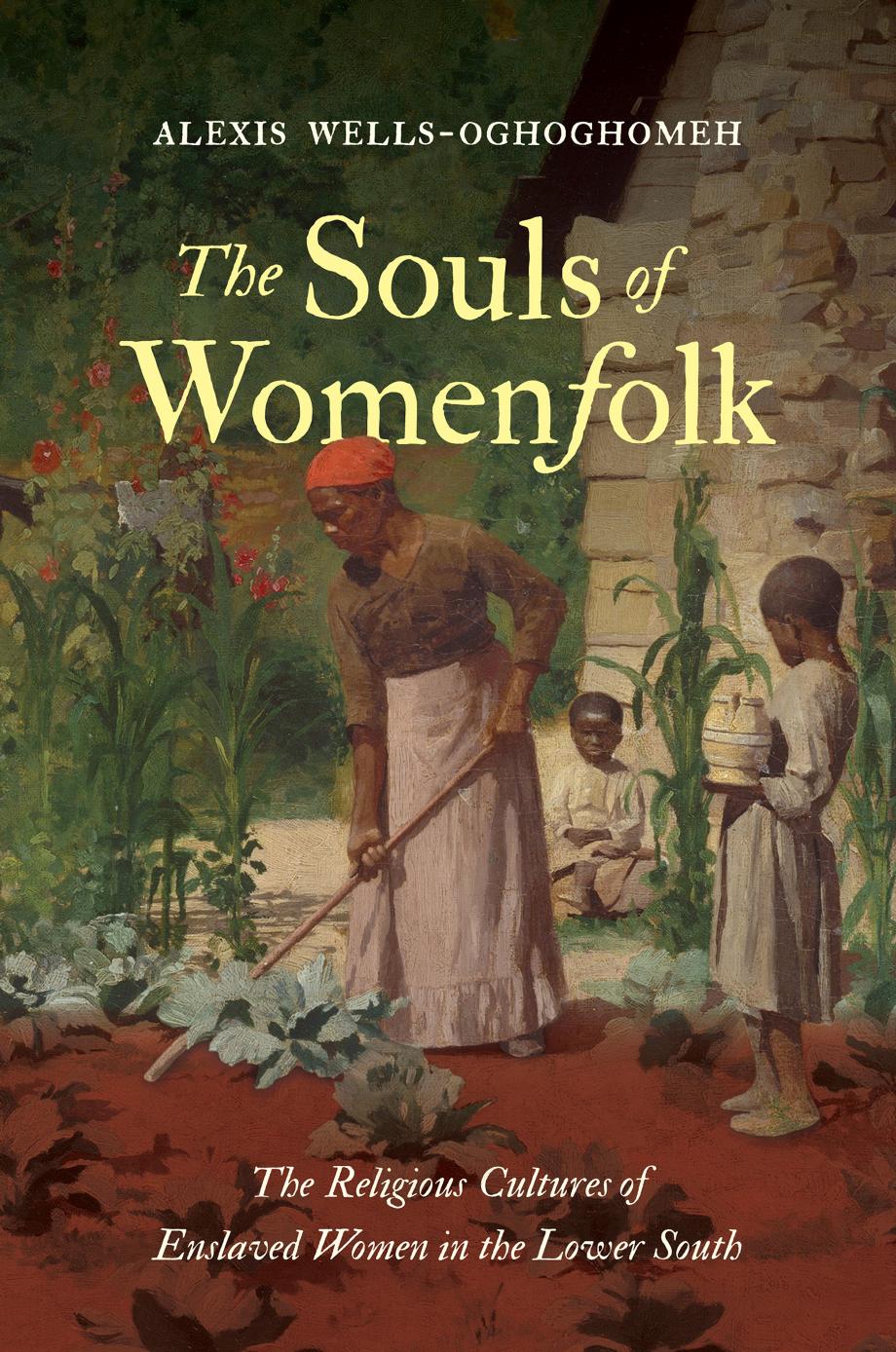The Souls of Womenfolk: The Religious Cultures of Enslaved Women in the Lower South by Alexis Wells-Oghoghomeh

Author:Alexis Wells-Oghoghomeh [Wells-Oghoghomeh, Alexis]
Language: eng
Format: epub, pdf
ISBN: 9781469663593
Google: 9k4czgEACAAJ
Publisher: University of North Carolina Press
Published: 2021-11-15T23:54:27.791262+00:00
Ritual Re/membering
In her recollections of the ritual lives of enslaved Georgians, Lowcountry resident Florence Postell narrated the story of a woman who took a basket of âcooked food, cake, pies, and wineâ to her daughterâs grave daily. More than a mere errand to appease a spirit, the mother carried dishes and âset out a regular dinner for her daughter and herselfâ because âshe say the daughterâs spirit meet her there and they dine together.â143 As evidenced by Postellâs account, womenâs connections and obligations to their children often began prior to birth and continued beyond the grave. The high probability of infant and child death, coupled with the dangers of pregnancy, birth, and the postpartum period in slavery, rendered birth and death inextricable in the lives of women. Though fathers, grandfathers, brothers, and other loved ones also grappled with the precarity of life, womenâs presence in birthing rooms and sickrooms made them key sustainers of bondpeopleâs ritual practices. Rooted in West African cosmologies yet responsive to American needs, enslaved peopleâs ritual protocols evinced both remembered and revised interpretations of birth, death, and the stages in between. Like their ancestors, southerners did not regard birth, death, and the circumstances surrounding them as mere accidents of chance. Rather, a personâs birth influenced their powers and choices, thereby making it one of the most spiritually significant moments in an individualâs life. Moreover, death marked a transition to the disembodied realm, with all its attendant powers. The protocols that enslaved people practiced around these events were born of cosmologies that acknowledged the close connection between the living and the dying, the unborn and the deceased. It was only through the proper enactment of protocols that spirits transitioned through the critical moments of the life cycle successfully and communities safeguarded themselves against spiritual retribution. Guided by powerful midwives and healers, enslaved women, men, and children re/membered the medicinal and ritual cycles of their forebears and crafted ceremonial responses to the dismembering effects of enslavement. As ritual authorities, women served alongside preachers, drummers, and other traditionally male figures. These venerated positions within enslaved communities not only reified womenâs power in ritual spaces but also formed the basis for their prominence in the psychic spaces of the sacred imagination.
Download
The Souls of Womenfolk: The Religious Cultures of Enslaved Women in the Lower South by Alexis Wells-Oghoghomeh.pdf
This site does not store any files on its server. We only index and link to content provided by other sites. Please contact the content providers to delete copyright contents if any and email us, we'll remove relevant links or contents immediately.
Machine Learning at Scale with H2O by Gregory Keys | David Whiting(4190)
Never by Ken Follett(3796)
Fairy Tale by Stephen King(3221)
The Man Who Died Twice by Richard Osman(2997)
Reminders of Him: A Novel by Colleen Hoover(2952)
Will by Will Smith(2794)
Rationality by Steven Pinker(2291)
Can't Hurt Me: Master Your Mind and Defy the Odds - Clean Edition by David Goggins(2229)
It Starts With Us (It Ends with Us #2) by Colleen Hoover(2202)
Friends, Lovers, and the Big Terrible Thing by Matthew Perry(2123)
The Becoming by Nora Roberts(2089)
The Stranger in the Lifeboat by Mitch Albom(2050)
Love on the Brain by Ali Hazelwood(1965)
New Morning Mercies: A Daily Gospel Devotional by Paul David Tripp(1877)
HBR's 10 Must Reads 2022 by Harvard Business Review(1778)
The Strength In Our Scars by Bianca Sparacino(1777)
A Short History of War by Jeremy Black(1763)
Never Finished: Unshackle Your Mind and Win the War Within by David Goggins(1644)
515945210 by Unknown(1601)
